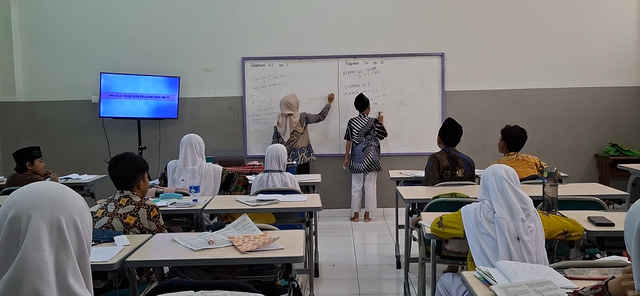Tentang KamiPedoman Media SiberKetentuan & Kebijakan PrivasiPanduan KomunitasPeringkat PenulisCara Menulis di kumparanInformasi Kerja SamaBantuanIklanKarir
2025 © PT Dynamo Media Network
Version 1.93.2
Konten dari Pengguna
Challenges in Implementing Differentiated Learning in Indonesia
29 Desember 2024 17:46 WIB
·
waktu baca 3 menitTulisan dari Kintan Rahmaeda Cahyaningtias tidak mewakili pandangan dari redaksi kumparan
ADVERTISEMENT
The diversity of students is an important element that characterizes the education system, especially in Indonesia. This diversity includes differences in ethnicity, socio-economic status, learning abilities, and learning styles. In this context, a significant challenge arises for educators to meet the needs of all learners while simultaneously achieving the set curriculum targets.

Curriculum Target Fulfillment and Its Challenges
ADVERTISEMENT
The fulfillment of curriculum targets reflects the success of an educational institution in achieving the specified competency standards. However, the diversity of students often poses a unique challenge in its implementation. Differentiated learning approaches have become one of the relevant strategies to address this gap. By providing flexibility in teaching methods, differentiation can address the unique needs of each student.
Unfortunately, the implementation of differentiated learning is often hindered by disparities in educational facilities, especially between urban and rural areas. In urban schools, complete facilities allow teachers to use various teaching strategies, including modern technology. Conversely, rural schools still face resource shortages, including adequate classrooms and access to digital aids.
ADVERTISEMENT
Educational Facility Inequality
The stark difference in educational facilities between urban and rural areas directly impacts the quality of learning. In urban areas, students are more likely to embrace new approaches such as differentiated learning due to the availability of technology and adequate resources. Conversely, in rural areas, infrastructure limitations often force teachers to use traditional methods that are less flexible in meeting students' needs.
The Unpreparedness of Students and Teachers
The unpreparedness of students also poses a significant challenge. Many students, especially in rural areas, are not yet accustomed to the independent and critical thinking required in differentiated learning. In addition, the low motivation to learn, especially in subjects like mathematics, further exacerbates the situation.
ADVERTISEMENT
On the other hand, the unpreparedness of teachers also affects the success of this approach. Many teachers in Indonesia have not received adequate training in the implementation of differentiated learning. Large class sizes and lack of professional support make it difficult for them to adjust teaching methods to the individual needs of students.
Solutions to Overcome the Challenges
To address these challenges, the government needs to focus on:
Differentiated learning has great potential to improve the quality of education in Indonesia. By addressing the challenges of unequal facilities and the unpreparedness of both students and teachers, this approach can become an effective solution in meeting curriculum targets while also supporting student diversity. Collaboration between the government, schools, and the community is essential to create a more inclusive and equitable education system.
ADVERTISEMENT

